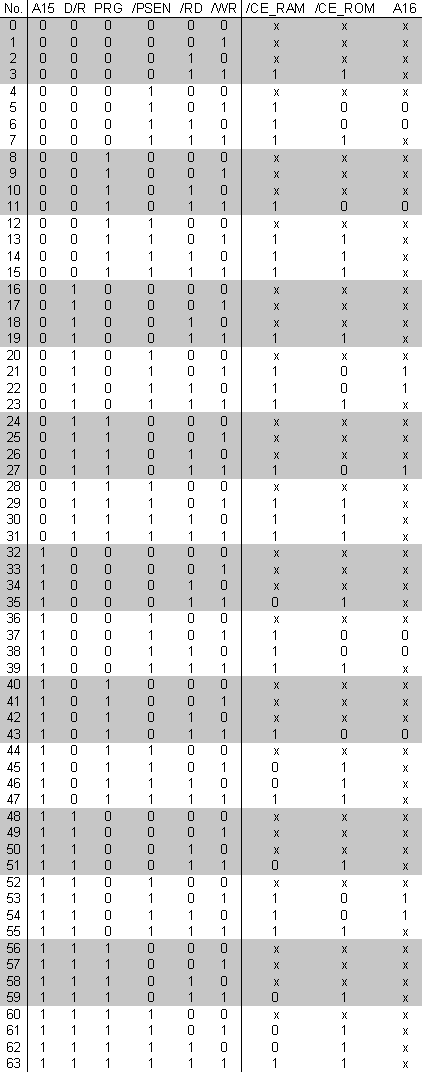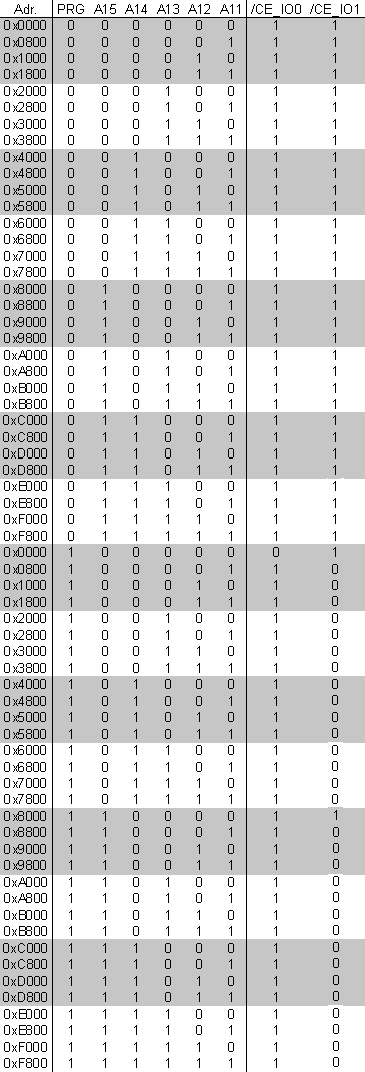 |
 |

| Main page | Projects | Electronics | Building furniture | Recipies | Corgies | About me |
| Electronics | 80c552 µC-board | Mainboard | Preamp | Power amplifier | Making PCBs | Tools |
Memory layout
Schematics
Software
GAL
Circuit board
GALThe GAL is the central addressdecoder on the µC-board. In the following tables, you can see which signals have which level: 

InputsOn the inputs of the GAL there are the address lines A11 to A15 and the controll lines /PSEN, /RD en /WR. Additionally two special signal are fed to the GAL, D/R for switching between debug and run mode and /PRG for switching to the programming mode. Both signals are generated by a portpin, which can be selected with 0R-resistors. When using the OS552 and the .-bix-file, the portpins P1.0 and P1.1 must be used. OutputsThe signal for enabling the outputs of the memory devices, /OE (Output Enable), is generated by combining /PSEN (Program Store ENable) and /RD (ReaD). The RAM memory is selected by the signal /CE_RAM (Chip Enable), the flash by /CE_ROM. The enable-signal for the RAM is passed through the watchdog. When the supply voltage drops too much, the enable-signals to the RAM are blocked and the voltage supply for the RAM is switched to the backup battery. This signal A16 switches between the two pages of the flash, in the run mode it is high and the upper page of the flash is selected. In the debug mode A16 is low, which is the reason why the OS552 lies in the lower page of the flash. Finally the GAL generated the signals for the memory-mapped-I/O. /CE_IO0 selects IC7, to which up to eight devices can be connected. Should this not be enough, /CE_IO1 can be used in the remaining I/O-range. SoftwareIn the softwarepackage, which can be downloaded from Elektor, contains the source file for the GAL and the JEDEC-file. The source file (upboard.pds) can be changed and compiled with the freeware program Palasm. When no changes are needed, the GAL can be programmed directly with the JEDEC-file. |
